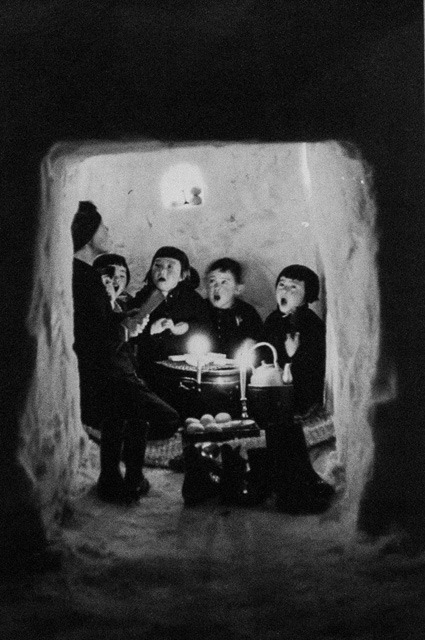(born Tokyo, 1915–1999)
After becoming interested in photography in high school, Hamaya bought his first Leica in 1935 and worked as a photographer for the Oriental Photo Industry Company. Like master documentary photographers Domon Ken and Kimura Ihee, Hamaya gained prominence in the social documentary photography movement that emerged just before World War II. He trained in aerial photography and worked as freelance photographer beginning in 1937.
While Hamaya photographed abroad and produced extensive documentaries of Tokyo from the prewar period to its reconstruction, his main interest remained the people and landscape of rural Japan. Throughout the 1940s and 1950s, he documented life in the twelve prefectures along the coast of the Sea of Japan. He briefly returned to Tokyo in 1960 to document the student protests against the renewal of the United States–Japan security treaty and published his work under the title A Chronicle of Grief and Anger. That same year, he became the first Japanese photographer to join Magnum Photos. From 1960 to 1980, he turned primarily to landscape photography.
Many of Hamaya’s images of Japan’s natural environment and rural areas were published under the series Yukiguni (Snow Land), Ura Nihon (Japan’s Back Coast), and Nihon Retto (Landscapes of Japan). His photographs received numerous awards and were presented in major exhibitions in Japan and abroad, including Edward Steichen’s landmark exhibition Family of Man at New York’s Museum of Modern Art in 1955.














